 |
| February 20, 2018 | Volume 14 Issue 07 |
Electrical/Electronic News & Products
Designfax weekly eMagazine
Archives
Partners
Manufacturing Center
Product Spotlight
Modern Applications News
Metalworking Ideas For
Today's Job Shops
Tooling and Production
Strategies for large
metalworking plants
Test equipment advancing to meet rapidly changing market needs
 Although the rise of the IoT, 5G, and advanced automotive electronics markets is instigating rapid changes in technology, test equipment is keeping pace, and not just in extensions to bandwidth specifications or signal resolution. Maureen Lipps, Multicomp Pro Private Label Product Segment Leader, Test and Tools, Newark Electronics, runs through important advances in the industry and its tools.
Although the rise of the IoT, 5G, and advanced automotive electronics markets is instigating rapid changes in technology, test equipment is keeping pace, and not just in extensions to bandwidth specifications or signal resolution. Maureen Lipps, Multicomp Pro Private Label Product Segment Leader, Test and Tools, Newark Electronics, runs through important advances in the industry and its tools.
Read the full article.
Smallest rugged AI supercomputer for avionics
 Aitech Systems has released the A178-AV, the latest iteration of its smallest rugged GPGPU AI super-computers available with the powerful NVIDIA Jetson AGX Xavier System-on-Module. With its compact size, the A178-AV is the most advanced solution for artificial intelligence (AI), deep learning, and video and signal processing for next-gen avionic platforms.
Aitech Systems has released the A178-AV, the latest iteration of its smallest rugged GPGPU AI super-computers available with the powerful NVIDIA Jetson AGX Xavier System-on-Module. With its compact size, the A178-AV is the most advanced solution for artificial intelligence (AI), deep learning, and video and signal processing for next-gen avionic platforms.
Learn more.
Touchless angle sensors get CAN SAE J1939 interface
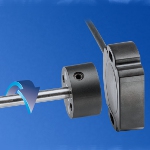 Novotechnik has added the CAN J1939 interface (developed for heavy-duty vehicles) to its RFC4800 Series of touchless angle sensors measuring angular position up to 360°, turn direction, turns, speed, and operational status. It can provide one or two output channels. It has a longer life and robustness than an optical encoder. It can signal if a sensor needs replacing or average a programmable number of values to output to reduce external noise if present. This is wear-free angle measurement made easy.
Novotechnik has added the CAN J1939 interface (developed for heavy-duty vehicles) to its RFC4800 Series of touchless angle sensors measuring angular position up to 360°, turn direction, turns, speed, and operational status. It can provide one or two output channels. It has a longer life and robustness than an optical encoder. It can signal if a sensor needs replacing or average a programmable number of values to output to reduce external noise if present. This is wear-free angle measurement made easy.
Learn more.
Radar level sensor monitors liquids and powders
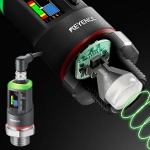 The innovative FR Series non-contact radar level sensor from Keyence has been designed to monitor the level of both liquid and powder in any environment. This sensor features short- and long-range models, as well as chemical and sanitary options to address a wide array of level sensing applications. Works even when obstructions or harsh conditions are present, such as build-up, steam, or turbulence.
The innovative FR Series non-contact radar level sensor from Keyence has been designed to monitor the level of both liquid and powder in any environment. This sensor features short- and long-range models, as well as chemical and sanitary options to address a wide array of level sensing applications. Works even when obstructions or harsh conditions are present, such as build-up, steam, or turbulence.
Learn more.
Raspberry Pi launches $70 AI Kit
 Artificial intelligence (AI) is all the rage, and the makers of Raspberry Pi have created a way for enthusiasts of the single-board computer systems to take part and do a lot of experimenting along the way.
Artificial intelligence (AI) is all the rage, and the makers of Raspberry Pi have created a way for enthusiasts of the single-board computer systems to take part and do a lot of experimenting along the way.
Read the full article.
3D model sharing at Brother Industries cuts rework
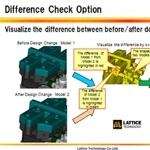 When Brother Industries, maker of printers, computers, and computer-related electronics, deployed Lattice Technology's XVL Player as a viewer for sharing 3D models throughout the processes of product design, parts design, mold design, mold production, and QA of molded parts, they reduced rework significantly -- especially from downstream departments. XVL Studio with its Difference Check Option helped address the rework in mold design, for example, by always keeping everyone informed of design changes.
When Brother Industries, maker of printers, computers, and computer-related electronics, deployed Lattice Technology's XVL Player as a viewer for sharing 3D models throughout the processes of product design, parts design, mold design, mold production, and QA of molded parts, they reduced rework significantly -- especially from downstream departments. XVL Studio with its Difference Check Option helped address the rework in mold design, for example, by always keeping everyone informed of design changes.
Read this real-world case study.
What is 3D-MID? Molded parts with integrated electronics from HARTING
 3D-MID (three-dimensional mechatronic integrated devices) technology combines electronic and mechanical functionalities into a single, 3D component. It replaces the traditional printed circuit board and opens up many new opportunities. It takes injection-molded parts and uses laser-direct structuring to etch areas of conductor structures, which are filled with a copper plating process to create very precise electronic circuits. HARTING, the technology's developer, says it's "Like a PCB, but 3D." Tons of possibilities.
3D-MID (three-dimensional mechatronic integrated devices) technology combines electronic and mechanical functionalities into a single, 3D component. It replaces the traditional printed circuit board and opens up many new opportunities. It takes injection-molded parts and uses laser-direct structuring to etch areas of conductor structures, which are filled with a copper plating process to create very precise electronic circuits. HARTING, the technology's developer, says it's "Like a PCB, but 3D." Tons of possibilities.
Learn more (video included on page).
New! Thermoelectric dehumidifiers for enclosures
 Seifert Systems has just introduced its line of compact Soliflex® Series thermoelectric dehumidifiers, with or without condensate pump. These IP 56-rated units are designed to dehumidify enclosures and small control panels, can be used indoors or outdoors, and are maintenance free. When used with a hygrostat, Soliflex dehumidifiers will keep enclosure humidity below a defined level and only operate when needed.
Seifert Systems has just introduced its line of compact Soliflex® Series thermoelectric dehumidifiers, with or without condensate pump. These IP 56-rated units are designed to dehumidify enclosures and small control panels, can be used indoors or outdoors, and are maintenance free. When used with a hygrostat, Soliflex dehumidifiers will keep enclosure humidity below a defined level and only operate when needed.
Learn more.
More Stego enclosure heater options from AutomationDirect
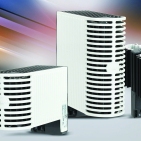 Automation-Direct has added more Stego enclosure heaters to their Enclosure Thermal Management lineup. These new 120 to 240 VAC/VDC units include small, flat versions that distribute heat evenly within compact enclosures and are available with 8- or 10-W heating capacities. Also added are compact loop heaters that feature a patented loop body design for increased natural convection airflow, reduced thermal stress on the heater, and better heat transfer. Loop heaters are available in 10- to 150-W heating capacities.
Automation-Direct has added more Stego enclosure heaters to their Enclosure Thermal Management lineup. These new 120 to 240 VAC/VDC units include small, flat versions that distribute heat evenly within compact enclosures and are available with 8- or 10-W heating capacities. Also added are compact loop heaters that feature a patented loop body design for increased natural convection airflow, reduced thermal stress on the heater, and better heat transfer. Loop heaters are available in 10- to 150-W heating capacities.
Learn more.
Great design: Handle with integrated lighting/signaling
 Signaling and indicator lights, switches, and buttons -- elements that hardly any machine can do without. The new JW Winco cabinet U-handle EN 6284 integrates all these functions into a single, compact element. The new U-handle is designed to enhance the operation of systems and machines. It features an integrated button and a large, colored, backlit area on the back of the handle. These elements can be used individually or in combination, providing a versatile tool for system control and process monitoring that can be seen from across the room.
Signaling and indicator lights, switches, and buttons -- elements that hardly any machine can do without. The new JW Winco cabinet U-handle EN 6284 integrates all these functions into a single, compact element. The new U-handle is designed to enhance the operation of systems and machines. It features an integrated button and a large, colored, backlit area on the back of the handle. These elements can be used individually or in combination, providing a versatile tool for system control and process monitoring that can be seen from across the room.
Learn more.
Engineer's Toolbox: What is ground loop feedback?
 Improper grounding can create problems in data logging, data acquisition, and measurement and control systems. One of the most common problems is known as ground loop feedback. Experts at CAS DataLoggers run through five ways to eliminate this problem.
Improper grounding can create problems in data logging, data acquisition, and measurement and control systems. One of the most common problems is known as ground loop feedback. Experts at CAS DataLoggers run through five ways to eliminate this problem.
Read the full article.
AI development kit for multi-camera products
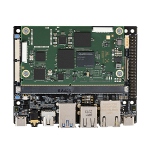 The QCS6490 Vision-AI Development Kit from Avnet enables engineering teams to rapidly prototype hardware, application software, and AI enablement for multi-camera, high-performance, Edge AI-enabled custom embedded products. The kit facilitates design with the new, energy-efficient MSC SM2S-QCS6490 SMARC compute module based on the Qualcomm QCS6490 processor. Provides support for up to four MIPI CSI cameras and concurrent Mini DisplayPort and MIPI DSI displays.
The QCS6490 Vision-AI Development Kit from Avnet enables engineering teams to rapidly prototype hardware, application software, and AI enablement for multi-camera, high-performance, Edge AI-enabled custom embedded products. The kit facilitates design with the new, energy-efficient MSC SM2S-QCS6490 SMARC compute module based on the Qualcomm QCS6490 processor. Provides support for up to four MIPI CSI cameras and concurrent Mini DisplayPort and MIPI DSI displays.
Learn more.
High-temp cabinet cooler keeps incineration process in business
 An EXAIR client company handles waste treatment on a large ship by operating an incinerator. The area where the incinerator is located gets very hot (over 120° F). This causes failures in the electronics package used to control the incineration process. Since compressed air is readily available, EXAIR's Model HT4225 Cabinet Cooler System is being used to keep the panel cool. It saved the customer from having to replace their control units due to the hot conditions in the incinerator room. Thermostat control is also available, conserving air and operating only when needed to minimize air consumption.
An EXAIR client company handles waste treatment on a large ship by operating an incinerator. The area where the incinerator is located gets very hot (over 120° F). This causes failures in the electronics package used to control the incineration process. Since compressed air is readily available, EXAIR's Model HT4225 Cabinet Cooler System is being used to keep the panel cool. It saved the customer from having to replace their control units due to the hot conditions in the incinerator room. Thermostat control is also available, conserving air and operating only when needed to minimize air consumption.
Learn about EXAIR's huge selection of Cabinet Coolers.
Compact snap-in capacitors for general-purpose applications
 TDK's new EPCOS B43659 series of snap-in aluminum electrolytic capacitors is the next generation of ultra-compact, general-purpose components for voltages of 450 V (DC) featuring an extremely high CV product. It provides the same features and serves the same applications as the previous series but is much more compact. These RoHS-compliant capacitors can be used in a wide range of applications, such as switched-mode power supplies, frequency converters, UPS, medical equipment, and solar inverters.
TDK's new EPCOS B43659 series of snap-in aluminum electrolytic capacitors is the next generation of ultra-compact, general-purpose components for voltages of 450 V (DC) featuring an extremely high CV product. It provides the same features and serves the same applications as the previous series but is much more compact. These RoHS-compliant capacitors can be used in a wide range of applications, such as switched-mode power supplies, frequency converters, UPS, medical equipment, and solar inverters.
Get all the specs.
Conductive Brush Ring overcomes current leakage in EV powertrains
 SKF's new Conductive Brush Ring paves the way to greater reliability and longer life in high-performance electric vehicle powertrain systems. Using pure carbon fiber bristles, it provides a reliable electrical connection between an EV eAxle rotor shaft and its housing. When used in combination with SKF Hybrid ceramic ball bearings, it helps to alleviate parasitic current effects that can lead to premature failure in bearings and other components. Available in different configurations for wet (oil-lubricated) motor designs -- and soon for dry (sealed) applications.
SKF's new Conductive Brush Ring paves the way to greater reliability and longer life in high-performance electric vehicle powertrain systems. Using pure carbon fiber bristles, it provides a reliable electrical connection between an EV eAxle rotor shaft and its housing. When used in combination with SKF Hybrid ceramic ball bearings, it helps to alleviate parasitic current effects that can lead to premature failure in bearings and other components. Available in different configurations for wet (oil-lubricated) motor designs -- and soon for dry (sealed) applications.
Learn more.
High speed and low power: New chip could bring neural networks to handhelds and appliances

MIT researchers have developed a special-purpose chip that increases the speed of neural-network computations by three to seven times over its predecessors, while reducing power consumption 94 to 95 percent. That could make it practical to run neural networks locally on smartphones or even to embed them in household appliances. [Image: Chelsea Turner/MIT]
By Larry Hardesty, MIT
Most recent advances in artificial-intelligence systems such as speech- or face-recognition programs have come courtesy of neural networks, densely interconnected meshes of simple information processors that learn to perform tasks by analyzing huge sets of training data.
But neural nets are large, and their computations are energy intensive, so they're not very practical for handheld devices. Most smartphone apps that rely on neural nets simply upload data to internet servers, which process it and send the results back to the phone.
Now, MIT researchers have developed a special-purpose chip that increases the speed of neural-network computations by three to seven times over its predecessors, while reducing power consumption 94 to 95 percent. That could make it practical to run neural networks locally on smartphones or even to embed them in household appliances.
"The general processor model is that there is a memory in some part of the chip, and there is a processor in another part of the chip, and you move the data back and forth between them when you do these computations," says Avishek Biswas, an MIT graduate student in electrical engineering and computer science, who led the new chip's development.
"Since these machine-learning algorithms need so many computations, this transferring back and forth of data is the dominant portion of the energy consumption. But the computation these algorithms do can be simplified to one specific operation, called the dot product. Our approach was, can we implement this dot-product functionality inside the memory so that you don't need to transfer this data back and forth?"
Biswas and his thesis advisor, Anantha Chandrakasan, dean of MIT's School of Engineering and the Vannevar Bush Professor of Electrical Engineering and Computer Science, describe the new chip in a paper that Biswas presented last week at the International Solid State Circuits Conference.
Back to analog
Neural networks are typically arranged into layers. A single processing node in one layer of the network will generally receive data from several nodes in the layer below and pass data to several nodes in the layer above. Each connection between nodes has its own "weight," which indicates how large a role the output of one node will play in the computation performed by the next. Training the network is a matter of setting those weights.
A node receiving data from multiple nodes in the layer below will multiply each input by the weight of the corresponding connection and sum the results. That operation -- the summation of multiplications -- is the definition of a dot product. If the dot product exceeds some threshold value, the node will transmit it to nodes in the next layer, over connections with their own weights.
A neural net is an abstraction: The "nodes" are just weights stored in a computer's memory. Calculating a dot product usually involves fetching a weight from memory, fetching the associated data item, multiplying the two, storing the result somewhere, and then repeating the operation for every input to a node. Given that a neural net will have thousands or even millions of nodes, that's a lot of data to move around.
But that sequence of operations is just a digital approximation of what happens in the brain, where signals traveling along multiple neurons meet at a "synapse," or a gap between bundles of neurons. The neurons' firing rates and the electrochemical signals that cross the synapse correspond to the data values and weights. The MIT researchers' new chip improves efficiency by replicating the brain more faithfully.
In the chip, a node's input values are converted into electrical voltages and then multiplied by the appropriate weights. Summing the products is simply a matter of combining the voltages. Only the combined voltages are converted back into a digital representation and stored for further processing.
The chip can thus calculate dot products for multiple nodes -- 16 at a time, in the prototype -- in a single step, instead of shuttling between a processor and memory for every computation.
All or nothing
One of the keys to the system is that all the weights are either 1 or -1. That means that they can be implemented within the memory itself as simple switches that either close a circuit or leave it open. Recent theoretical work suggests that neural nets trained with only two weights should lose little accuracy -- somewhere between 1 and 2 percent.
Biswas and Chandrakasan's research bears that prediction out. In experiments, they ran the full implementation of a neural network on a conventional computer and the binary-weight equivalent on their chip. Their chip's results were generally within 2 to 3 percent of the conventional network's.
"This is a promising real-world demonstration of SRAM-based in-memory analog computing for deep-learning applications," says Dario Gil, vice president of artificial intelligence at IBM. "The results show impressive specifications for the energy-efficient implementation of convolution operations with memory arrays. It certainly will open the possibility to employ more complex convolutional neural networks for image and video classifications in IoT [the internet of things] in the future."
Published February 2018
Rate this article
View our terms of use and privacy policy
